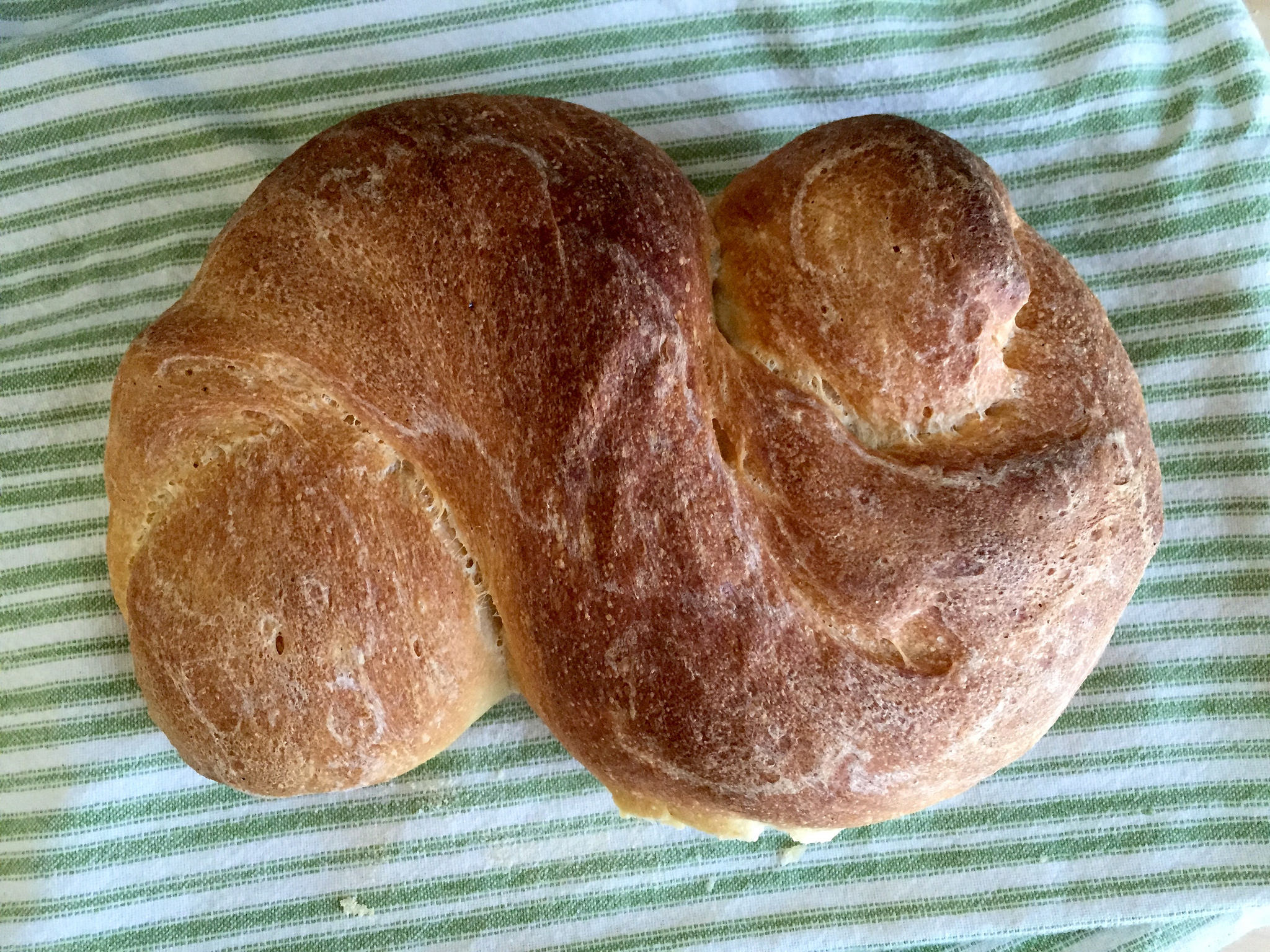I’m a little obsessed with semolina right now. It’s been steadily making its way into my regular kitchen rotation over the past few months. David Leibovitz’s fresh pasta dough recipe with a healthy dose of semolina was a complete revelation in my pasta-making endeavors. Discovering semolina-based gnocchi alla Romana made a huge dent in my previous understanding of Italian food. And of course, semolina makes a great coating for baking surfaces when baking bread.
I know I say it every few weeks about a new bread recipe, but Pane Siciliano might just be my new favorite. It’s simple and clean-tasting, but with a complex, interesting flavor. It had a decently long shelf life for a homemade, relatively lean bread. The last remnants on my 3-loaf batch ended up as a small batch of roasted garlic croutons, which I had vague plans to use as a soup topping. They ended up as an afternoon snack. 10/10 would snack again.
Pane Siciliano
From Peter Reinhart’s The Bread Baker’s Apprentice, yields 3 medium-sized loaves
Ingredients
- 16oz pâte fermentée
- 8oz bread flour
- 8oz semolina flour
- 1 1/4 tsp salt
- 1 1/4 tsp instant yeast
- 2 tbsp olive oil
- 1 tbsp honey
- 10-12 oz water, lukewarm
- More semolina flour for dusting
- Optional: Sesame seeds for topping (I love sesame seeds, but in my experience more end up on the cutting board/plate than in my mouth, so I usually omit these.)
- Day 1: Prep the pâte fermentée. See my post on French bread for instructions!
- Day 2: Bring pâte fermentée to room temperature for about an hour before making dough. Cut it into 8-10 pieces and leave covered while warming up.
- Mix the dough: Combine the flours, salt and yeast in a mixing bowl, then work in the pâte fermentée pieces. In a separate bowl, whisk together the oil and 10 oz water, then drizzle over the flour-pâte mixture until ingredients come together into a loose ball. Add remaining water if dough is too dry.
- Knead the dough: Turn the dough out onto a lightly floured surface and knead for 8-10 minutes, or until dough is smooth and pliable. It should pass the windowpane test.
- Let rise dough at room temperature for 2 hours, or until dough doubles in size.
- Shape loaves: Divide the dough into 3 equal pieces, careful to degas as little as possible. Shape as for baguettes into 24-inch lengths, then coil ends in to form an S shape. Place shaped loaves on a pan dusted with semolina flour, then mist with oil and cover loosely with plastic wrap.
- Let loaves rise again for 90 minutes while you preheat the oven to 500°F. Remember to place a steam pan in the bottom of the oven. If you’d like to bake them the next day and extend the dough’s maturation (recommended by Reinhart), you can place them in the fridge before rising. Then next day, let them rise for at least 2 hours before baking.
- Bake the loaves: Immediately before baking, mist loaves with water and sprinkle on sesame seeds. Place pan in oven with 1/2 cup of hot water in the steam pan. Mist the oven walls with water in 30 second intervals 3 times. Lower heat to 450°F for 15 minutes, then rotate pan and bake for another 10-15 minutes. Finished loaves will be golden brown and sound hollow when tapped on bottom.
- Let loaves rest for at least an hour before slicing and eating.



